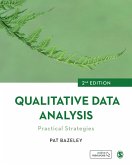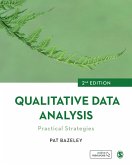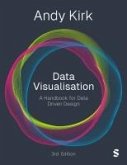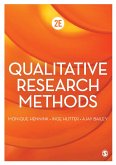Balancing theoretical foundations with practical strategies, this book helps you develop an approach to your qualitative analysis that is both systematic and insightful.
It demonstrates the importance of tying analysis into every aspect of research, from design, through data collection and management, to writing up, and provides step-by-step guidance on how to embed analysis from start to finish. Grounded in the reality of doing research, this second edition:
. Presents visual and text-based methods for analysis, using manual and digital tools
. Inspires confidence as you code, connect and interrogate observational, text and visual data
. Showcases best practice and helps you navigate real-life dilemmas using case studies of research from across the social sciences.
Together with rich online resources including videos, datasets and journal articles, this is an important new edition for all students undertaking qualitative research, with a focus on analysis and design.
It demonstrates the importance of tying analysis into every aspect of research, from design, through data collection and management, to writing up, and provides step-by-step guidance on how to embed analysis from start to finish. Grounded in the reality of doing research, this second edition:
. Presents visual and text-based methods for analysis, using manual and digital tools
. Inspires confidence as you code, connect and interrogate observational, text and visual data
. Showcases best practice and helps you navigate real-life dilemmas using case studies of research from across the social sciences.
Together with rich online resources including videos, datasets and journal articles, this is an important new edition for all students undertaking qualitative research, with a focus on analysis and design.
Dieser Download kann aus rechtlichen Gründen nur mit Rechnungsadresse in A, D ausgeliefert werden.
Pat Bazeley s book is suitable for both novice and experienced researchers who are serious about undertaking rigorous qualitative analysis. It succeeds in balancing academic considerations with the practicalities of doing qualitative data analysis. The entire text is prescribed reading for all my senior students who are tackling qualitative research. Jacques de Wet









